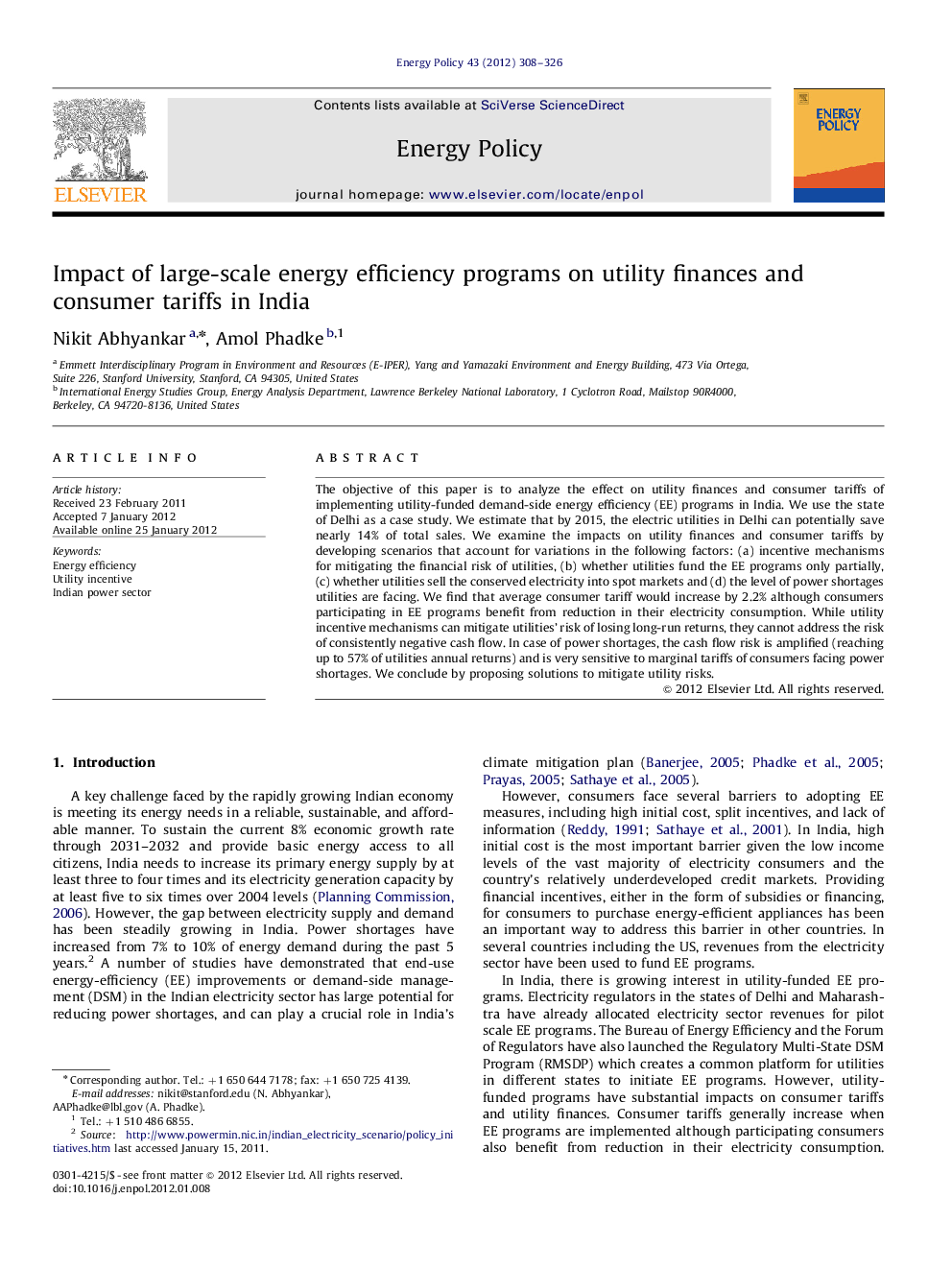| Article ID | Journal | Published Year | Pages | File Type |
|---|---|---|---|---|
| 994863 | Energy Policy | 2012 | 19 Pages |
The objective of this paper is to analyze the effect on utility finances and consumer tariffs of implementing utility-funded demand-side energy efficiency (EE) programs in India. We use the state of Delhi as a case study. We estimate that by 2015, the electric utilities in Delhi can potentially save nearly 14% of total sales. We examine the impacts on utility finances and consumer tariffs by developing scenarios that account for variations in the following factors: (a) incentive mechanisms for mitigating the financial risk of utilities, (b) whether utilities fund the EE programs only partially, (c) whether utilities sell the conserved electricity into spot markets and (d) the level of power shortages utilities are facing. We find that average consumer tariff would increase by 2.2% although consumers participating in EE programs benefit from reduction in their electricity consumption. While utility incentive mechanisms can mitigate utilities’ risk of losing long-run returns, they cannot address the risk of consistently negative cash flow. In case of power shortages, the cash flow risk is amplified (reaching up to 57% of utilities annual returns) and is very sensitive to marginal tariffs of consumers facing power shortages. We conclude by proposing solutions to mitigate utility risks.
► We model implementation of energy efficiency (EE) programs in Delhi, India. ► We examine the impact on utility finances and consumer tariffs from 2012 to 2015. ► We find that average consumer tariffs increase but participating consumers benefit. ► Existing regulatory mechanisms cannot address utilities’ risk of negative cash flow. ► Frequent true-ups or ex-ante revenue adjustment is required to address such risk.
